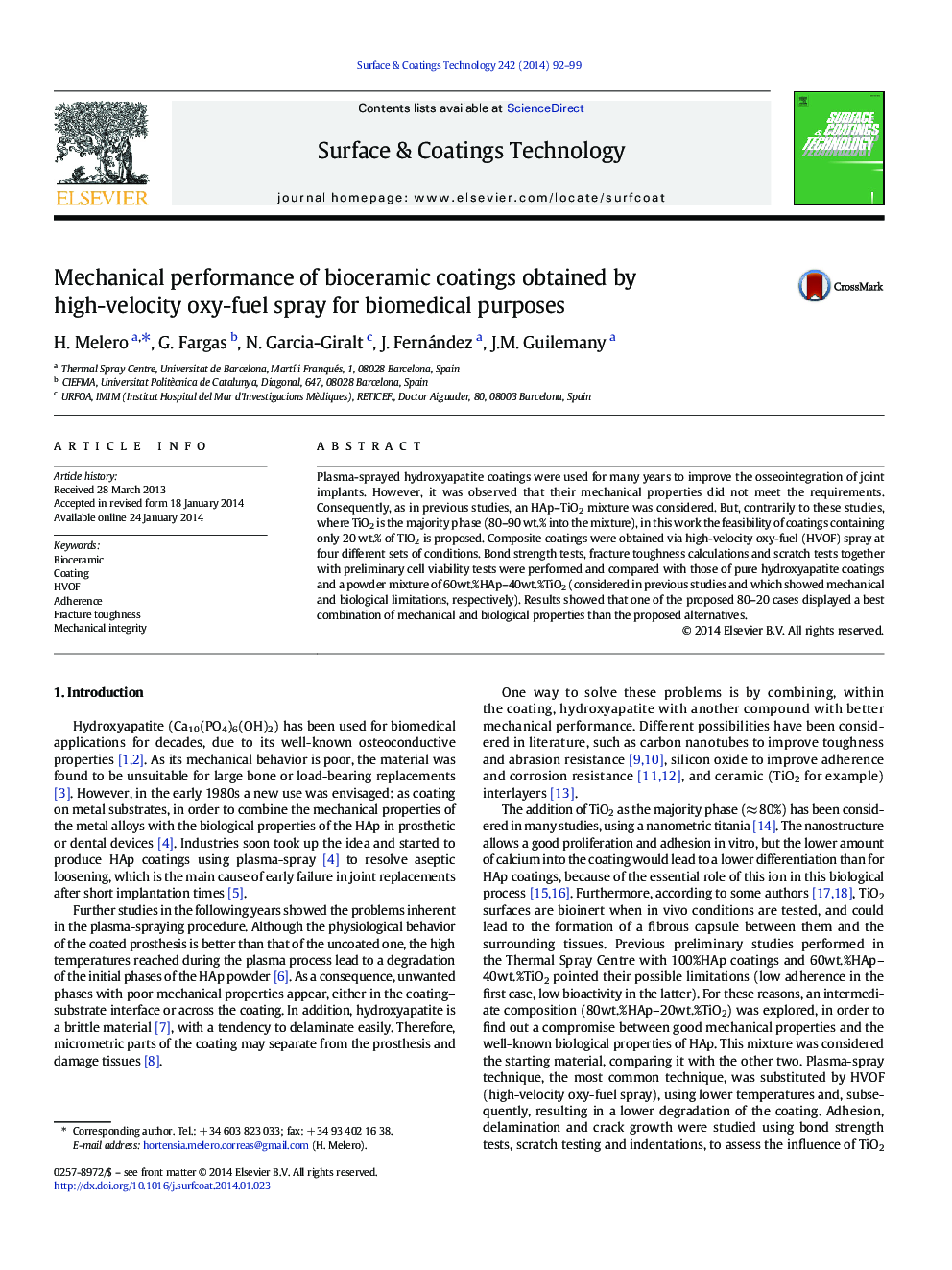| Article ID | Journal | Published Year | Pages | File Type |
|---|---|---|---|---|
| 1657596 | Surface and Coatings Technology | 2014 | 8 Pages |
•TiO2(> 80%)–HAp coating literature exists, to improve mechanical performance of HAp.•However, few studies focus on HAp(majority)–TiO2 blend, to maintain HAp bioactivity.•Three powders (100HAp–0TiO2, 80–20 and 60–40) were HVOF sprayed and tested.•Bond strength, scratch tests and K1c calculation by indentation have been performed.•One of the 80–20 conditions appears as the best compromise mechanics-HAp amount.
Plasma-sprayed hydroxyapatite coatings were used for many years to improve the osseointegration of joint implants. However, it was observed that their mechanical properties did not meet the requirements. Consequently, as in previous studies, an HAp–TiO2 mixture was considered. But, contrarily to these studies, where TiO2 is the majority phase (80–90 wt.% into the mixture), in this work the feasibility of coatings containing only 20 wt.% of TIO2 is proposed. Composite coatings were obtained via high-velocity oxy-fuel (HVOF) spray at four different sets of conditions. Bond strength tests, fracture toughness calculations and scratch tests together with preliminary cell viability tests were performed and compared with those of pure hydroxyapatite coatings and a powder mixture of 60wt.%HAp–40wt.%TiO2 (considered in previous studies and which showed mechanical and biological limitations, respectively). Results showed that one of the proposed 80–20 cases displayed a best combination of mechanical and biological properties than the proposed alternatives.
